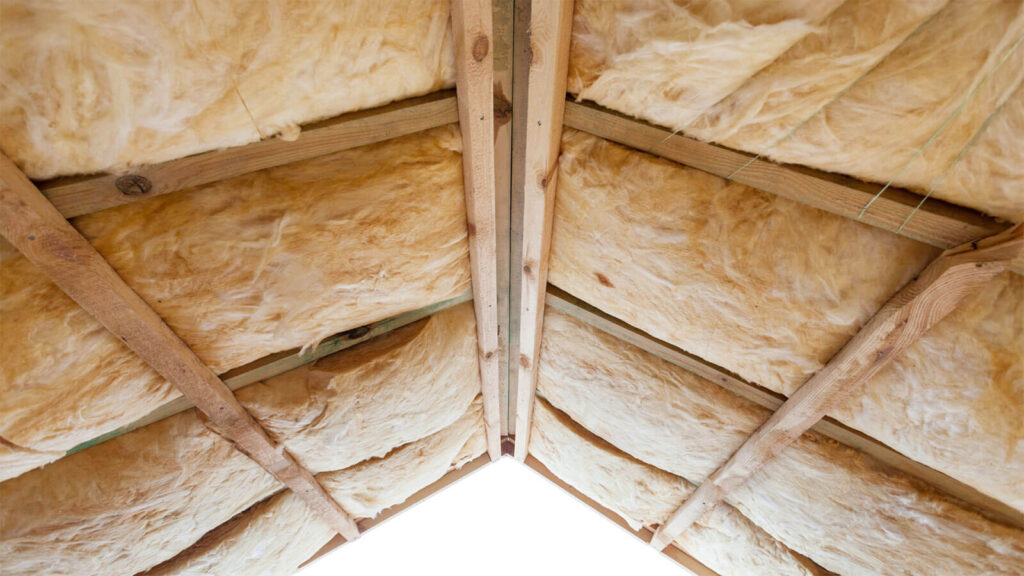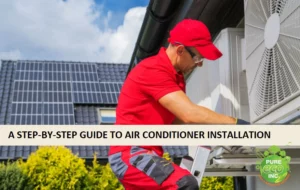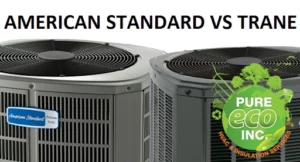In this article, we will delve into the importance of insulating your crawl space and the numerous benefits it brings. Whether you’re a homeowner or a DIY home improvement enthusiast, understanding crawl space insulation is crucial for creating a comfortable and energy-efficient home.
Factors to consider before insulating crawl space
There are many ways to insulate your foundation walls and crawl space, such as spray foam insulation, fiberglass insulation, rigid foam insulation, and more. To determine the best insulation process for crawl spaces, you must take into account several key factors, including:
- the climate in your region,
- the existing condition of your crawl space,
- any moisture-related issues, and
- the accessibility of the space for installation and maintenance.
Properly evaluating these factors will help determine the best insulation materials and techniques for your specific crawl space.
Preparatory measures and assessing your crawl space
To lay the foundation for a successful insulation project, you must thoroughly assess your crawl space, inspect your existing insulation, identify any moisture sources, address any moisture issues, and clear out any debris.
1. Inspect the Existing Insulation
The first step in insulating your crawl space is to evaluate whether there is any existing insulation in place. Take the time to inspect the walls, floor, rim joists, and ceiling of the crawl space for any kind of insulation for crawl spaces. Specifically, look for insulation batts, blankets, or foam boards that may have been installed previously. Assess the condition of the insulation, checking for signs of damage, moisture, or mold growth. This inspection will help you decide whether to remove or reinforce the existing insulation during the insulation process.
2. Identifying Potential Moisture Sources
Moisture is a common enemy of crawl spaces and can cause a host of problems if left unchecked. Before you can insulate the walls, identify potential moisture sources within the crawl space. These may include leaky pipes, condensation from HVAC systems, groundwater seepage, or inadequate drainage. Pay close attention to areas prone to water accumulation, such as low-lying spots or near downspouts. Identifying these sources will help you address and mitigate moisture issues effectively during the insulation process.
3. Dealing with Existing Moisture Issues
Before you can proceed with any kind of insulation, you must address any existing moisture issues, as these can compromise the effectiveness of insulation and lead to mold growth and even structural damage. Take the necessary steps to rectify any leaks, repair damaged pipes, improve drainage, or install a sump pump if needed. Additionally, consider implementing moisture control measures such as crawl space vapor barriers or dehumidifiers to maintain a dry and healthy crawl space environment.
4. Clearing out Any Debris or Obstructions
A cluttered crawl space can hinder the insulation process and affect its long-term performance. Before installing new insulation, clear out any debris, obstructions, or organic materials that may be present. Remove fallen leaves, old insulation, discarded items, and any accumulated dirt or debris. Ensure that access points, such as crawl space doors or hatches, are unobstructed and easily accessible. This step will create a clean and suitable environment for installing insulation and maximize its efficiency.
WHAT KIND OF INSULATION IS BEST FOR CRAWL SPACES?
The most popular form of insulation is fiberglass batts insulation. This would be installed between exposed rafters on the crawl space ceiling.
Another common insulation material is cellulose, which can also come in batts rolls and be installed the same way.
It is possible to put loose fill insulation in your crawl space, but that would require plywood or another structure to be installed and used to hold it in and up.
Finally, rigid foam board insulation can also be used in crawl spaces. The cost would be higher than with batts, but this method gives you a high R-value and greatly reduces drafts and moisture accumulation.
HOW TO CHOOSE THE BEST INSULATION MATERIAL FOR YOUR CRAWL SPACE
You should consider several factors when choosing the right insulation for your crawl space, starting with moisture resistance. Since crawl spaces are susceptible to moisture issues, select insulation materials that have good moisture resistance properties. Moisture-resistant materials help prevent mold and mildew growth and maintain the integrity of the insulation over time.
You should also consider the desired R-value. The R-value measures the insulation’s resistance to heat flow. Consider the climate in your region and consult local building codes or energy efficiency guidelines to determine the recommended R-values for your region.
Remember that crawl spaces can attract pests such as rodents and insects, so opt for insulation materials that are pest-resistant to minimize the risk of infestations and damage.
Finally, consider the ease of installation and compatibility with the crawl space structure. Some insulation materials may require professional installation, while others can be DIY-friendly. Try to choose products specifically designed for crawl spaces—for example, look for insulation materials labeled as suitable for crawl spaces or with crawl space-specific features such as moisture barriers, mold resistance, and pest deterrence. These products are designed to withstand the unique challenges of crawl space environments.

CRAWL SPACE INSULATION PROCESS
Before starting the installation process, you must prepare the space according to your specific circumstances.
1. Installing Insulation on the Walls
Before you can install wall insulation, you must first remove any dust or debris from the walls. Repair any cracks, gaps, or holes using caulk or appropriate sealants. Ensure that the walls are dry before proceeding.
The next step is to cut and fit the insulation batts or panels. Measure the height and length of the crawl space walls and cut insulation batts or panels accordingly. Leave a small gap at the top and bottom to allow for proper airflow. Fit the insulation snugly against the walls, ensuring full coverage.
Finally, secure the insulation in place. Use a staple gun or appropriate fasteners to do so and staple or fasten the insulation at regular intervals, making sure it remains taut and without any sagging.
2. Insulating the Crawl Space Floor
If moisture is a concern, consider installing a moisture barrier or vapor retarder on the crawl space floor. This helps prevent moisture from rising and affecting the insulation.
Measure and cut enough insulation material to fit between the floor joists. Ensure a snug fit and secure the insulation by using insulation supports or wires. Be careful not to compress the insulation, as this may reduce its effectiveness.
Next, use insulation supports or wires to hold the insulation in place between the floor joists. Make sure the insulation remains straight and doesn’t sag or fall down.
3. Sealing Air Leaks and Gaps
The next step is to identify and seal any air leaks. Start by inspecting the crawl space for any leaks, gaps, or cracks. Common areas for air leakage include around pipes, electrical wires, vents, and openings in the crawl space walls.
Use caulk, foam sealant, or weatherstripping to seal these areas and prevent air infiltration. Apply it generously around any gaps and cracks and seal any openings or penetrations with appropriate materials to create an airtight barrier.
4. Insulating Crawl Space Access Points
The final step is to insulate the crawl space doors and hatches to prevent heat loss or gain. Use insulation materials such as foam board or insulation blankets, to cover these access points. Cut the insulation to fit the door or hatch dimensions and secure it in place.
Finally, install weatherstripping around the doors and hatches to create a tight seal. This helps prevent drafts and maintain insulation effectiveness. Make sure the weatherstripping creates a snug fit when the doors or hatches are closed.
Tools and Materials Needed for the Installation Process
To streamline the insulation installation process, gather the necessary tools and materials beforehand. Some commonly required items include:
- Insulation Materials: Depending on the chosen insulation type (e.g., fiberglass batts, foam board panels, spray foam, or cellulose), ensure you have an adequate supply of the insulation material suitable for your crawl space dimensions.
- Utility Knife or Insulation Cutter: You’ll need a sharp utility knife or insulation cutter to cut insulation materials accurately.
- Measuring Tape: Use a measuring tape to measure the dimensions of the crawl space accurately and determine the required insulation lengths.
- Staple Gun or Fasteners: A staple gun or appropriate fasteners are essential for securing insulation materials to the crawl space walls or framework.
- Caulk and Sealants: High-quality caulk or sealants will help seal air leaks, gaps, or cracks in the crawl space to enhance energy efficiency.
- Flashlight or Work Light: Ensure sufficient lighting in the crawl space to facilitate accurate measurement and installation.
- Protective Coverings: Consider using plastic sheeting or crawl space encapsulation materials to create a moisture barrier on the floor or walls, if required.
Vented vs. encapsulated approach
When it comes to crawl space insulation, one important consideration is whether to opt for a vented or encapsulated approach.
Vented crawl spaces feature open vents that allow air to circulate freely, while encapsulated crawl spaces are sealed and isolated from the external environment.
Here are the main characteristics and benefits of each approach:
| Vented Crawl Space Insulation | Encapsulated Crawl Space Insulation | |
| Insulation Process | a. Insulating the Walls: In a vented crawl space, insulation is typically applied to the walls between the floor joists. Insulation materials such as fiberglass batts or foam board panels can be used.b. Ground Cover: A vapor barrier or plastic sheeting is often placed on the crawl space floor to prevent ground moisture from evaporating into the space. | a. Sealing: The first step is to seal off the crawl space completely, including vents, gaps, and cracks in the walls and floor.b. Moisture Barriers: A thick vapor barrier, often made of reinforced polyethylene, is installed on the crawl space floor and sometimes on the walls as well. This barrier acts as a moisture barrier and helps prevent the intrusion of outside air.c. Insulation: Insulation materials, such as closed-cell spray foam or rigid foam boards, are applied to the walls and sometimes to the floor. These materials provide both insulation and additional moisture control. |
| Benefits | Ventilation: The presence of vents allows for air circulation, which can help reduce moisture buildup and potential mold growth.Cost: Vented crawl spaces are generally less expensive to insulate, as they don’t require extensive encapsulation materials. | Moisture Control: Encapsulation significantly reduces moisture-related issues by creating a moisture barrier, which helps protect the crawl space and the rest of the home from mold, rot, and other moisture-related damage.Energy Efficiency: By eliminating air leaks and providing effective insulation, encapsulated crawl spaces contribute to improved energy efficiency in the home.Enhanced Indoor Air Quality: Encapsulation helps prevent the entry of allergens, pests, and pollutants from the crawl space into the living areas, improving indoor air quality. |
From the above table, it is obvious that the decision between vented and encapsulated crawl space insulation depends on various factors, including your climate, local building codes, existing moisture issues, and personal preferences. While vented crawl spaces were common in the past, encapsulated crawl spaces are gaining popularity due to their superior moisture control and energy efficiency benefits.
Consult with a professional insulation contractor like Pure Eco to assess your specific crawl space conditions and provide guidance on the most suitable insulation approach for your home.
BENEFITS OF INSULATING A CRAWL SPACE
The first benefit you’ll notice is a warmer floor. You won’t have to wake up early in the morning and walk across cold floorboards or tiles anymore. There are better ways, after all, to wake up in the morning than by “floor shock.”
The increased comfort will also be felt through warmer indoor air in the cold season and cooler indoor air during the hot L.A. summer months.
The second benefit is that your indoor air quality will improve. Allergens, mold spores, bacteria, dust, and all manner of irritants can get into your living space air from the crawl space. This is the air you and your family have to breathe regularly, and poor indoor air quality can cause a host of respiratory problems, allergies, aggravation of asthma, and other health conditions.
Another benefit is that insulating (and sealing) your crawl space can help keep insects and rodents from getting into your home — or even into your crawl space to begin with!
In addition, if you have plumbing pipes running through your crawl space, insulating it (and them) can prevent them from freezing during a rare cold snap. It will also prevent the water in those pipes from getting too cold.
Next, you may have uninsulated air ducts in your crawl space. Insulating your crawl space (walls and ceiling both) is generally a better way to solve the problem than by insulating the ducts themselves, since the latter approach can be rather expensive and without the broader benefits of a fully insulated crawl space.
Finally, insulation in your crawl space can help your home by preventing undue moisture accumulation. When your home’s air is too moist, it can cause mold or mildew to grow and lead to damaged drywall and wood structures as water condenses on walls and wood trim. Some of that excess moisture may be coming from your crawl space, and insulation, sealing, and a vapor barrier can stop it. This also reduces your need to use energy to run a dehumidifier.
HOW TO CARE AFTER YOUR SPACE INSULATION FOR LONG-TERM SUCCESS
After insulating your crawl space, regularly monitor and control moisture levels to ensure the effectiveness of the insulation and maintain a healthy environment. Keep an eye on the crawl space for signs of excessive humidity, condensation, or water intrusion. Consider using a hygrometer to measure the relative humidity in the crawl space. If moisture issues arise, identify and address the sources promptly. Implement moisture control measures such as using dehumidifiers, improving ventilation, or installing additional drainage solutions if needed.
To ensure long-lasting insulation performance, maintain the integrity of the insulation materials. Regularly inspect the crawl space for any signs of damage, sagging, or displacement of the insulation. Address any issues promptly by reinforcing or replacing damaged insulation. Take care to prevent compression of insulation materials, as this can reduce their effectiveness. Avoid storing items on top of the insulation to maintain its proper thickness and coverage.
Schedule periodic inspections of the crawl space insulation to assess its condition and effectiveness. Inspect for any signs of moisture, mold growth, pest activity, or air leaks. Check the insulation for any gaps, tears, or areas that may have shifted. Perform necessary maintenance tasks, such as resealing air leaks or adding additional insulation if needed. Regular inspections and maintenance will help preserve the insulation’s performance and prolong its lifespan.
Crawl space insulation plays a vital role in preserving the overall health and efficiency of your home. It acts as a barrier against the external elements, preventing unwanted moisture, drafts, and temperature fluctuations from infiltrating your living space. Follow our tips above to create a protective envelope that enhances indoor comfort, lowers energy consumption, and safeguards against potential structural damage.
If you wish to see for yourself the benefits of crawl space insulation, contact us today at (877) 870-7998 to ask for your free quote, take advantage of our generous terms of service, and request your free Home Comfort Estimate!





